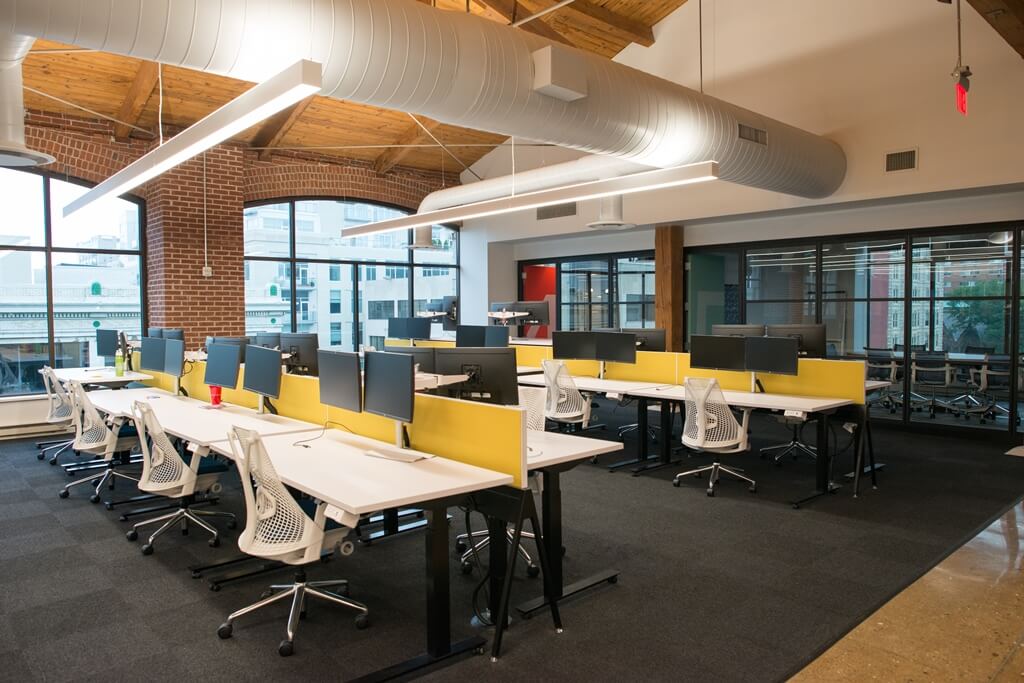Though people still talk about the corner office as a benchmark of success in the workplace, more and more companies are tearing out cubicles and private offices in favor of open floor plans with flexible furniture. The potential benefits of open offices—flexibility, opportunities for collaboration, and reduction of hierarchies—are appealing to companies that want to encourage innovation, but some projects require a level of focus best obtained in an enclosed, private space. Consulting with an architect can help you determine what mix of open and closed spaces will work best for your company.
Tech companies have long touted the benefits of open offices in terms of their ability to foster collaboration. By giving each employee a similar workstation within an open plan, there’s a removal of hierarchy that empowers every worker to generate the next big idea. Casual desk-side meetings and interdepartmental cross-pollination happen more readily in these environments. And there’s an overhead cost savings, with each employee getting roughly 40 to 50 usable square feet (as opposed to 125 to 250 usable square feet per person in private offices), meaning more people can fit in less space.
But for all of the potential benefits of open offices, there are an equal number of complaints about noise, health, and comfort. One of the drawbacks to removing walls in the workplace is that overall noise levels tend to increase. For all of the productivity boosted by having high-energy people working in close proximity, there might be an equal reduction in employees who are unable to concentrate above the general din. Sound carries in an open office, meaning that a coworker’s cold or phone call might inhibit the productivity of everyone within earshot. And that one sick coworker stands a larger chance of spreading germs when there are no partitions to block a sneeze.
In an office context, privacy can often be accomplished simply by closing a door. What open offices need are quiet spaces where people can go to do focused work. Flexible swing spaces allow those who have a harder time concentrating amidst the sea of low-partition tables to break away for a specific task before rejoining their collaborators. There are times, after all, when an important phone call shouldn’t be interrupted by an informal discussion; nor should someone else’s unimportant phone call distract from a crucial meeting. Some companies with open offices install phone booths along their perimeters to separate casual conversations and the daily routine.
Through interviews and an evaluation of programmatic requirements, an architect can help you determine which spatial configurations will meet your company’s needs. If your employees travel often or work remotely, you might consider having fewer permanent workstations in favor of flexible spaces that can be reserved on an as-needed basis for those infrequent office visitors. If your company’s workflow relies upon groups of coworkers clustering together in hives of intense activity, perhaps smaller conference rooms would serve you best. Whether you’re considering a move to a new facility or a renovation to an old one, an architect will listen to your needs and guide you to the spatial solution that fits best.


